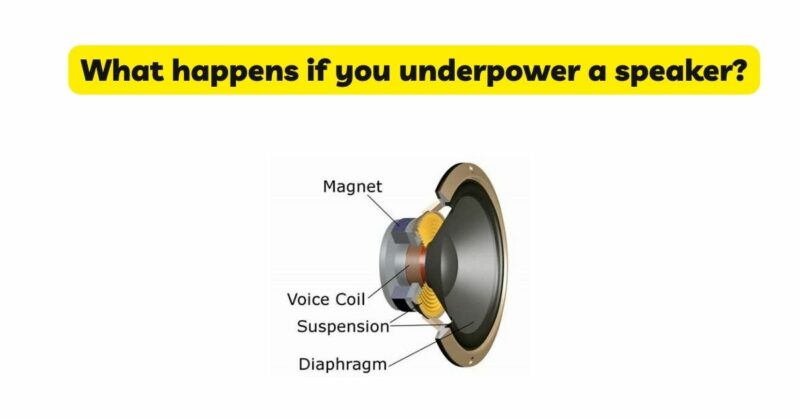Amplifiers play a vital role in driving speakers and delivering optimal audio performance. However, using an underpowered amplifier with speakers that demand more power can have significant consequences. In this article, we will delve into the effects and risks of underpowering speakers, helping you understand the potential drawbacks and considerations when it comes to matching amplifier power to speaker requirements.
Understanding Speaker Power Requirements: Speakers have specific power requirements, often referred to as power handling capabilities, which indicate the amount of power they can handle without distortion or damage. It is crucial to match the power output of the amplifier to the power requirements of the speakers to ensure they perform optimally and avoid potential problems.
Consequences of Underpowering Speakers:
- Insufficient Volume and Dynamic Range: Underpowering speakers results in insufficient volume levels and limited dynamic range. The amplifier may not provide enough power to drive the speakers to their full potential, leading to a lack of clarity and reduced overall volume. Music with dynamic peaks may sound compressed and lack the impact and detail that the speakers are capable of producing.
- Distortion and Clipping: When an amplifier is underpowered, it may struggle to provide the necessary voltage and current to accurately reproduce the audio signal. As a result, the amplifier may enter into distortion or clipping when pushed to higher volumes. Distortion introduces unwanted harmonic content, affecting the accuracy and fidelity of the audio signal. Clipping occurs when the amplifier reaches its maximum output, resulting in a distorted waveform that can damage speakers and cause audible artifacts.
- Strain on Amplifier and Speakers: Underpowering speakers places additional strain on both the amplifier and the speakers. The amplifier is forced to work harder, potentially operating near or at its maximum capacity, which can lead to increased heat generation and premature component failure. Similarly, the speakers may not receive the power they require, causing the voice coils and other components to be strained, resulting in reduced lifespan and potential damage.
- Limited Frequency Response: Underpowering can negatively impact the frequency response of speakers, particularly in the lower frequency range. The speakers may struggle to reproduce deep bass notes accurately, leading to a loss of detail, definition, and impact in the low-end frequencies. This can result in a thin and unbalanced sound reproduction, compromising the overall audio experience.
Preventing Underpowering: To avoid the consequences of underpowering, it is essential to carefully match the power output of the amplifier to the power requirements of the speakers. Consider the speaker’s power handling capabilities, impedance, and sensitivity when selecting an amplifier. It is generally recommended to choose an amplifier that can comfortably provide the necessary power to drive the speakers without strain.
Additional Considerations:
- Headroom: Having some headroom, which refers to the available power beyond the average listening level, can be beneficial. It allows for dynamic peaks in the music without causing the amplifier to distort or clip. Having adequate headroom ensures a more dynamic and engaging listening experience.
- Speaker Sensitivity: Consider the sensitivity of the speakers, measured in decibels (dB), which indicates how loud the speakers can be with a given amount of power. Higher sensitivity speakers require less power to produce the same volume level as lower sensitivity speakers. Speakers with higher sensitivity are generally more suitable for underpowered amplifier scenarios.
- Room Size and Acoustics: The size of the room and its acoustic properties should also be taken into account. Larger rooms or rooms with poor acoustic conditions may require more powerful amplification to fill the space and overcome any limitations imposed by the room’s size or acoustics.
Conclusion: Underpowering speakers can result in insufficient volume, reduced dynamic range, distortion, and strain on both the amplifier and the speakers. To ensure optimal audio performance, it is crucial to match the power output of the amplifier to the power requirements of the speakers. By considering factors such as power handling capabilities, sensitivity, and room characteristics, you can make informed decisions and create a well-balanced audio system that delivers the best possible sound reproduction.


